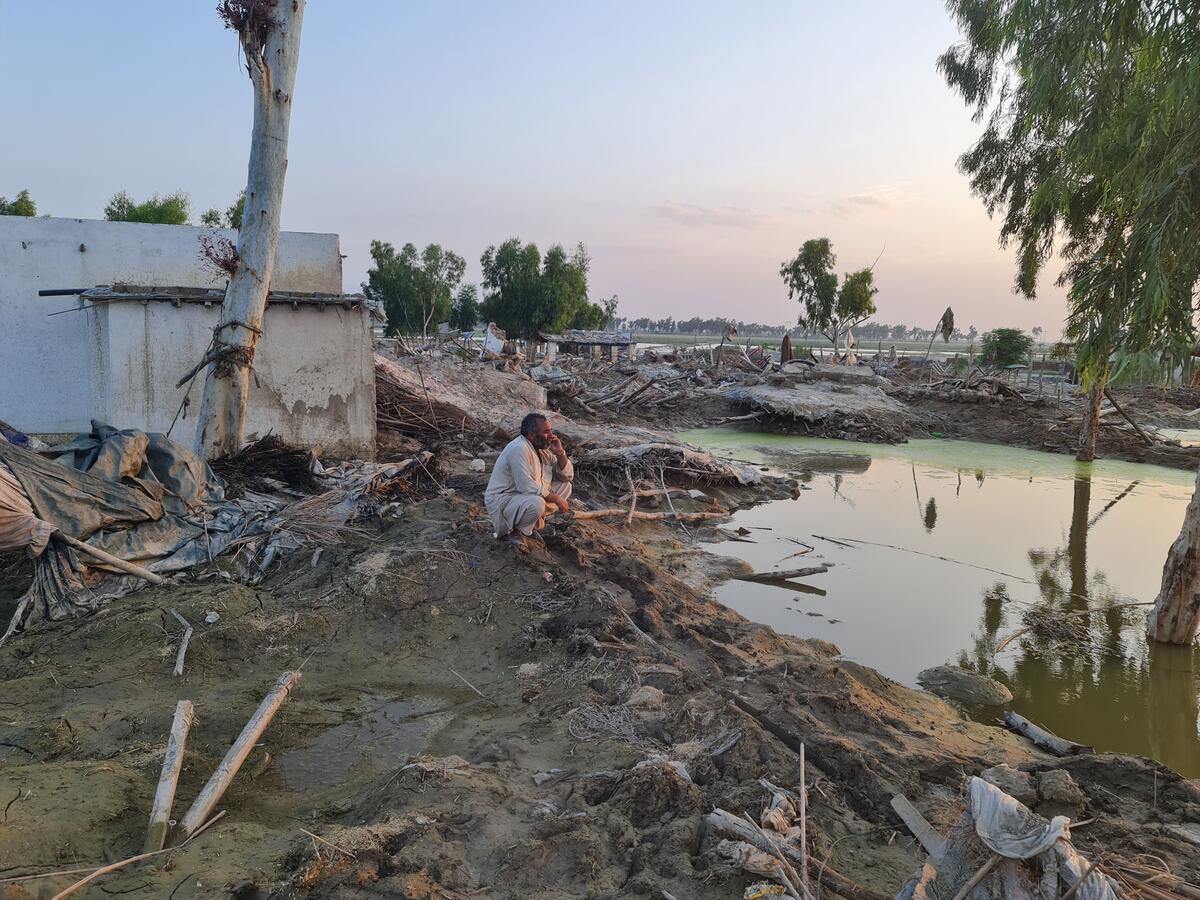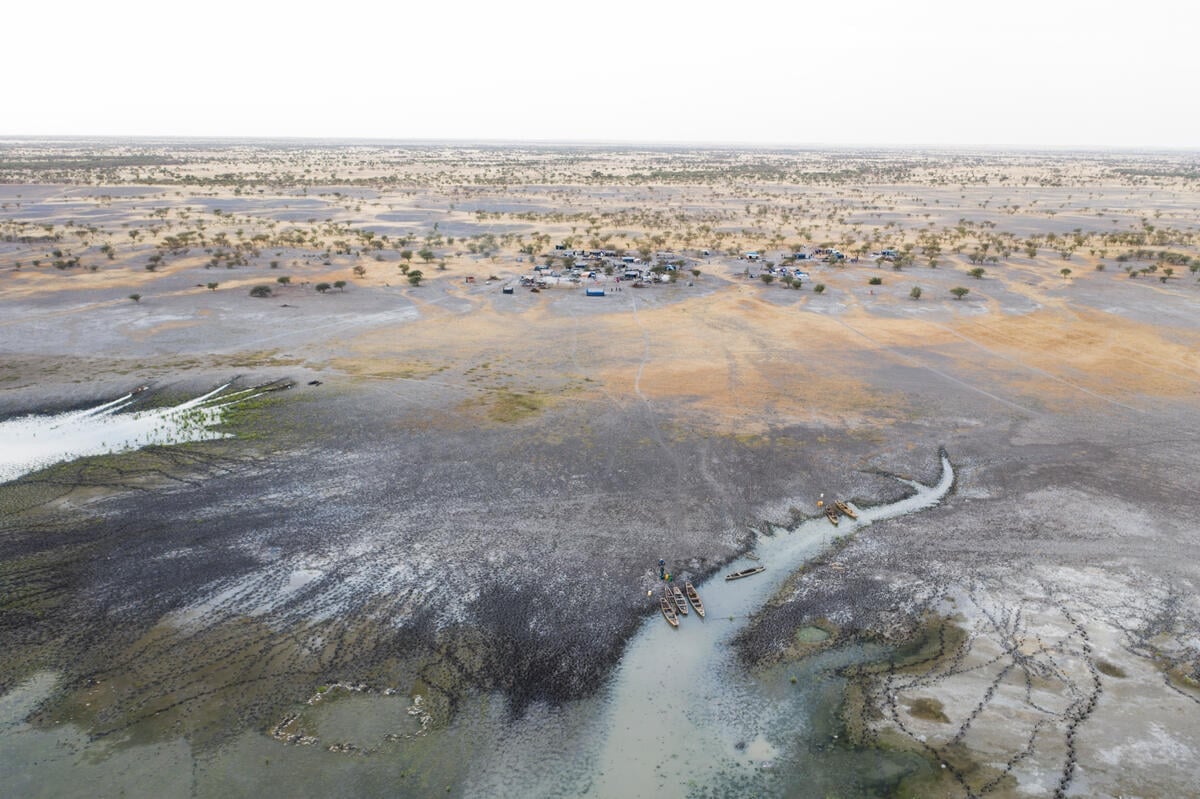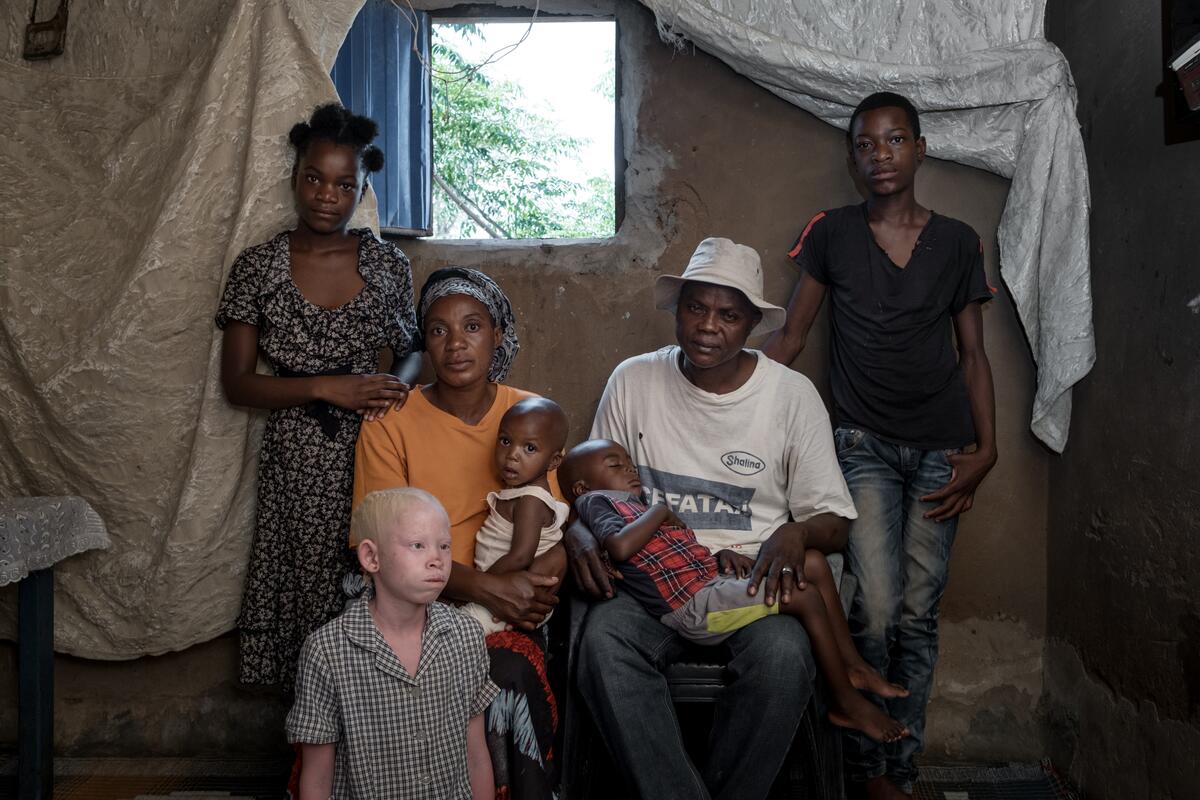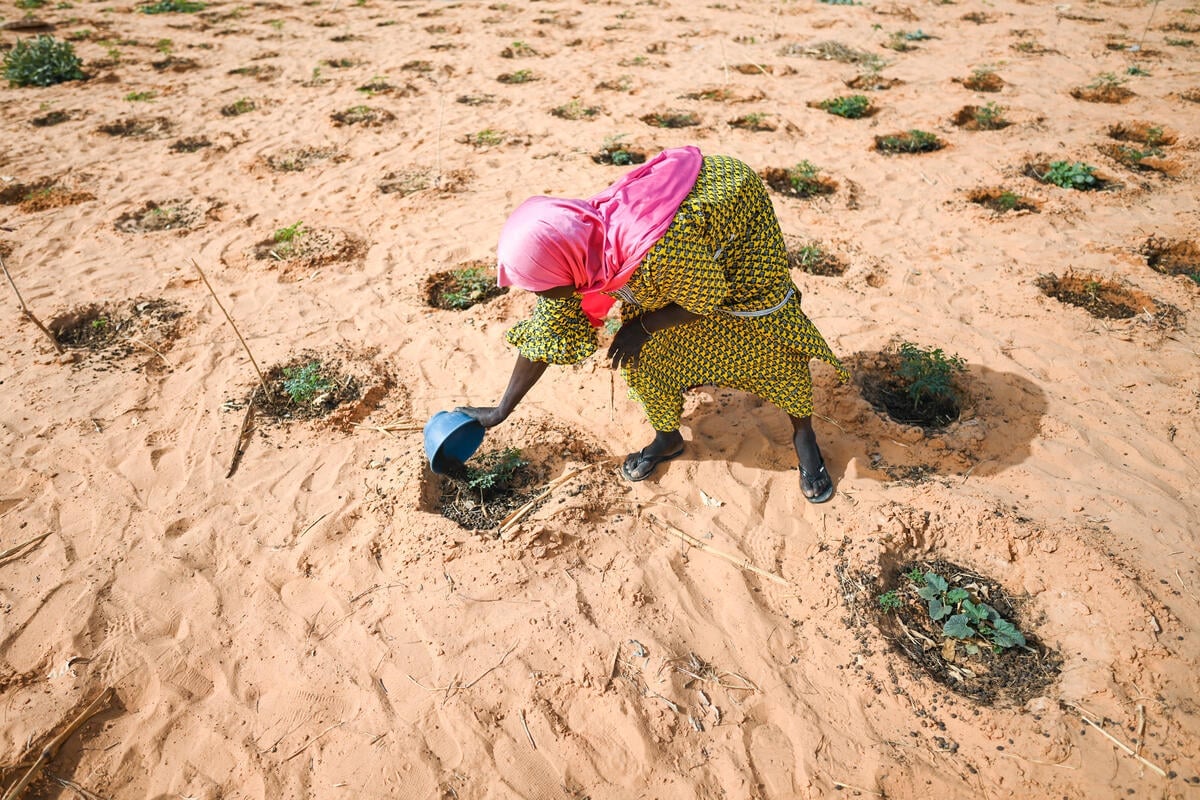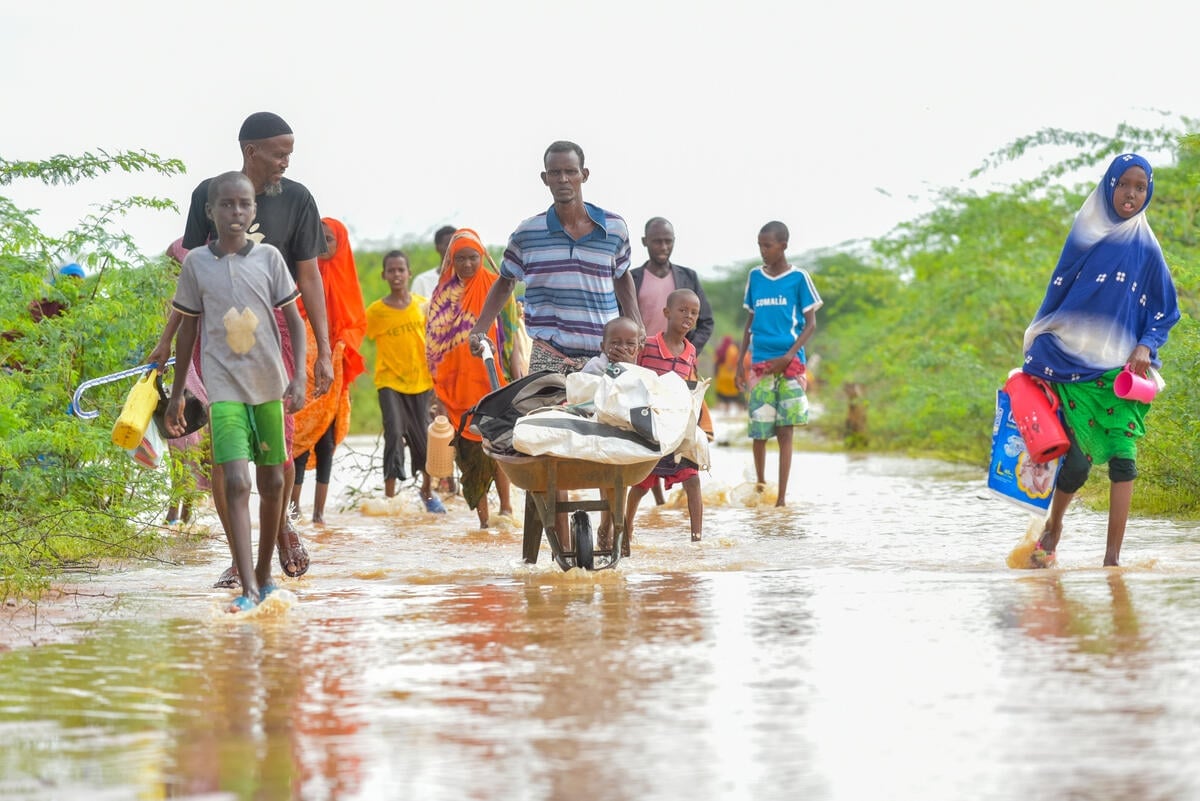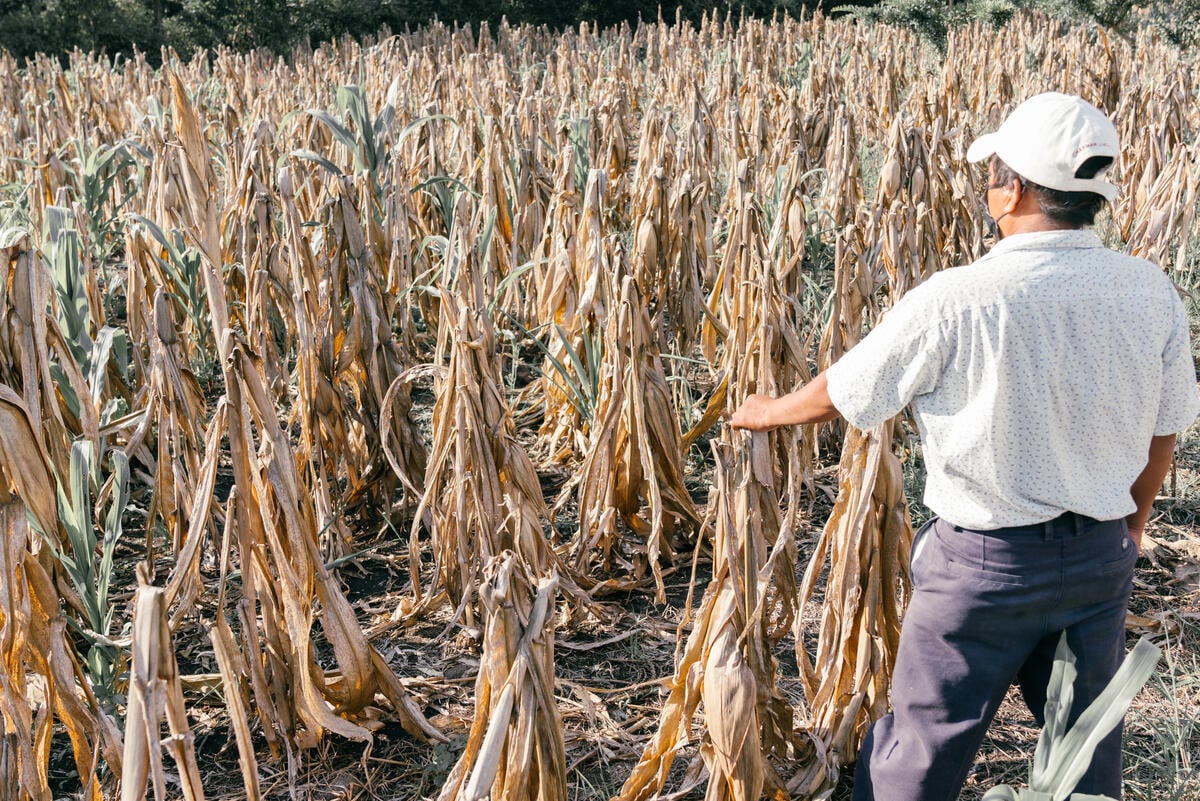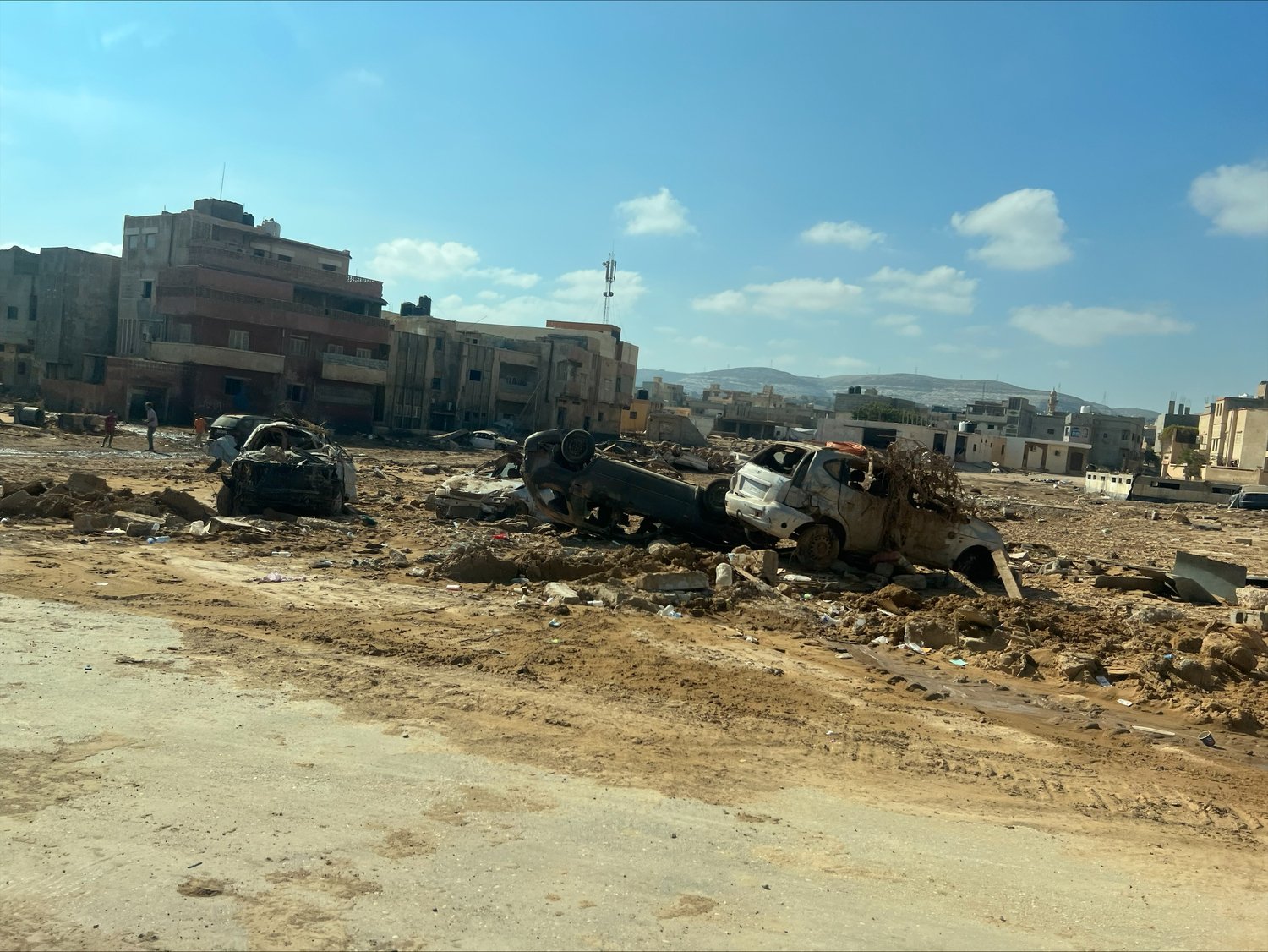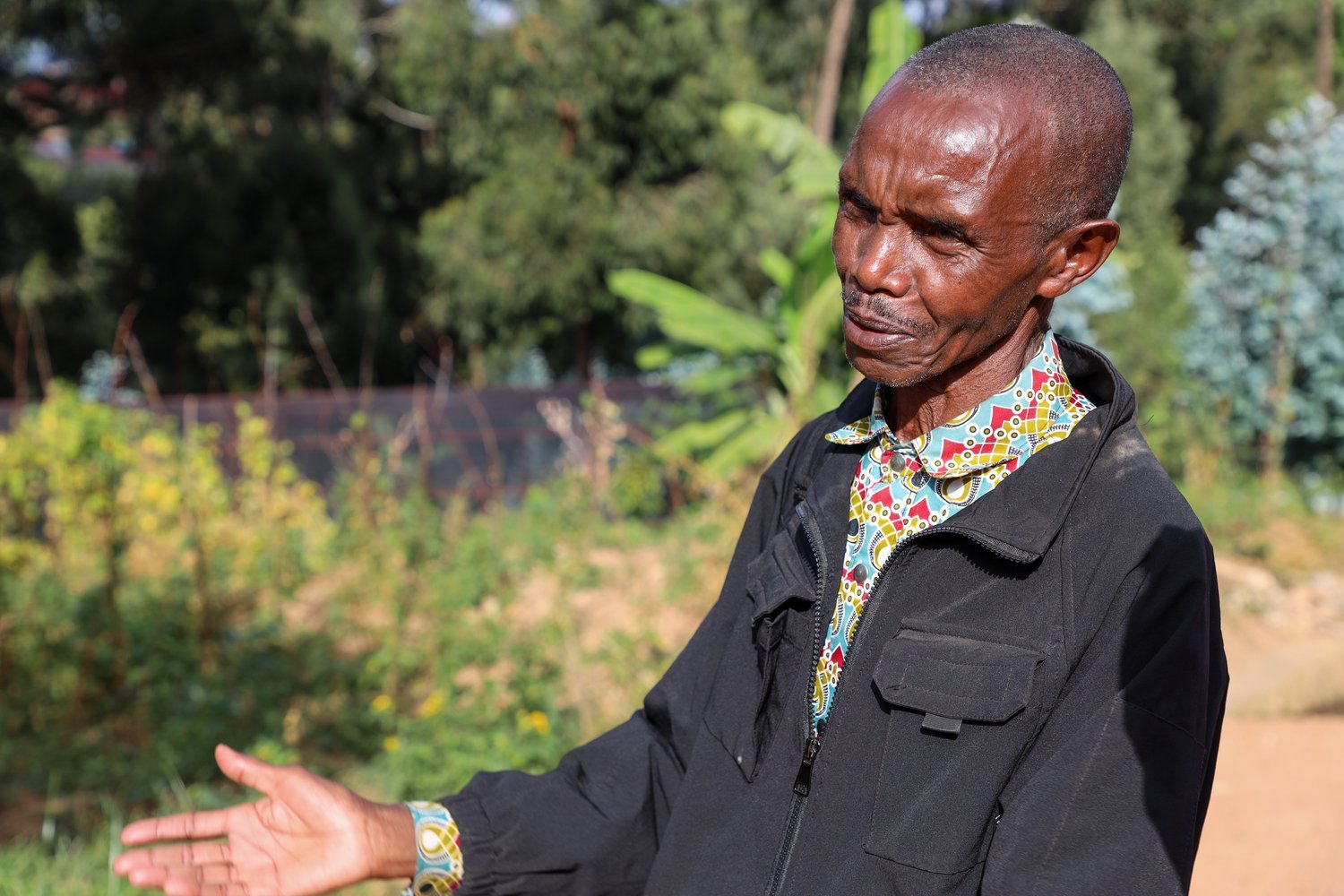Climate change and disaster displacement
Climate change and disaster displacement
UNHCR is providing protection and assistance to many refugees and internally displaced people impacted by the climate emergency as well as helping them increase their resilience in a changing climate.

What is the impact of climate change on the forcibly displaced and stateless?
Climate change is increasingly linked to conflict and human displacement
Growing numbers of people fleeing persecution, violence and human rights violations occurring in relation to the adverse effects of climate change and disasters need international protection. In 2022, 84 per cent of refugees and asylum seekers fled from highly climate-vulnerable countries, an increase from 61 per cent in 2010. The scope for durable solutions is also narrowing. In 2020, only one per cent of refugees were able to return home – a challenge which will likely grow, as the impact of climate change further deteriorates basic living conditions and opportunities for development in many countries of origin.
At the same time, a significant percentage of forcibly displaced and stateless people are living in the most climate-vulnerable environments in the world, where – together with their host communities – they lack access to environmentally sustainable resources and resilience to the impacts of climate change. Women, girls and other groups with specific needs often face higher risks and greater burdens from the impacts of climate change, due to existing roles, responsibilities and cultural norms.
Where is climate change having the worst impact?
Climate change impacts everyone. Especially people who are already forcibly displaced. UNHCR has identified 22 countries of particular concern,2 given their heightened vulnerability to climate change, and the large numbers of forcibly displaced and stateless people residing within them. Projections show that the situation will likely significantly deteriorate in these countries by 2030.3 Despite initial investments by the international community to support national governments’ adaptation and resilience efforts in these countries, the poorest areas which host displaced and stateless populations often ‘fall through the cracks’ in national development and adaptation plans and programmes, further exacerbating inequalities and protection concerns for people at heightened risk, and leaving these communities markedly behind.
How is UNHCR addressing the problem?
UNHCR is working towards a future vision for 2030, firmly rooted in the ambition of UNHCR’s 2022-2026 Strategic Directions, and aligned to the UN Framework Convention on Climate Change (UNFCCC)Link is external:
“By 2030, increasing numbers of forcibly displaced and stateless people fleeing from climate-fueled crises and/or living in climate-vulnerable countries find solutions, are protected and resilient to the impacts of climate change, and have the means to live self-sufficient lives.”
Underpinning this vision is UNHCR’s own commitment to further green its operations and supply chains.
Building on the Strategic Framework for Climate Action, which was launched in 2020, our new Strategic Plan for Climate Action 2024-2030 details a global roadmap for prioritized action in support of host governments to realize this ambitious goal.
Read the Strategic Plan for Climate Action 2024 - 2030
UNHCR’s climate action is joint action. We cannot achieve this vision alone. In support of host governments, we will work with other humanitarian and development organizations, as well as the private sector to achieve four key objectives by 2030:
1. People who forced to flee across borders due to persecution, violence and human rights violations occurring in relation to the adverse effects of climate change and disasters are protected and safe
UNHCR ensures that national government institutions, regional bodies, legal practitioners, academia, civil society and other relevant entities have increased understanding of people’s protection needs and entitlements when they flee across borders, and guide them on how the Refugee Convention and other international and regional instruments apply when people need international protection. We support states and our legal and other partners to respond to asylum claims arising in the context of the changing climate.
2. Forcibly displaced and stateless people and their hosts can access services that promote the sustainable use of natural resources and a clean and healthy environment
UNHCR engages with displaced communities to preserve and rehabilitate the environment, mitigating protection risks such as gender-based violence. We are driving a transition to renewable energy, for example by solarizing diesel-fueled boreholes, health centers and schools serving displaced people and their hosts. By increasing displaced people’s access to climate-smart water and sanitation services, we help reduce dependence on scarce natural resources and tensions with hosting communities. Whenever we can, we advocate with governments and development partners to encourage investment in environmentally sustainable public services for communities that host displaced and stateless people.
3. People forced to flee, stateless people and their hosts can prepare for, withstand, recover and be protected from the impacts of climate change
UNHCR works with authorities and local responders to create or expand protection services for forcibly displaced people whose protection risks are exacerbated by climate impacts and disasters. We provide sustainable and climate-resilient shelter to shield displaced people from heavy rains and floods and to reduce the environmental impact of displacement.
We advocate and partner with Governments, humanitarian and/or development actors to ensure refugees, returnees and their hosts are included in shock-responsive, climate-adaptive social protection programmes, while at the same time providing direct humanitarian cash assistance through our own programming to the most marginalized and impacted community members. We work with development actors and governments to enable refugees and their hosts, and returnee populations to access, establish or strengthen climate-resilient and environmentally sustainable livelihoods. We work with partners to ensure Governments and/or local responders to create or expand early warning systems and preparedness measures in areas hosting displaced people.
4. UNHCR minimizes its own negative impacts on the environment
We are working to reduce our carbon footprint by reducing greenhouse gas emissions, solarizing offices and greening our fleet. Our transition from fossil fuel-based energy resources to renewable energy sources is part of the UN’s wider commitment to ‘Greening the Blue’. We are incorporating climate considerations into all areas of the end-to-end supply chain, including planning, sourcing, material contents, manufacturing processes, procurement, delivery and lifecycle management of relief items.
Where does UNHCR work on climate action?
We are working toward the long-term vision across our more than 130 country operations, regional bureaux and headquarters. We are also sharpening our focus in the 22 countries of most concern until 2026.
As part of our humanitarian response in South Sudan, we are partnering with refugees and their hosts to convert flooded areas into food opportunities, enhancing communities’ climate resilience.

In Pakistan, we are providing clean energy to over 250,000 refugees and their hosts with the support of development partners. This has increased refugees’ access to livelihood opportunities and self-reliance.
In Uganda, we have supported the design of a government government-led plan for water and environment in refugee-hosting areas and attracted new development funding to benefit refugees and their hosts.

In Malawi, we are partnering with the African Union on parametric climate risk insurance for displaced populations, aiming to provide refugees predictable financing when a climate shock hits. This strengthens their economic resilience to climate change.
Policy and normative development
Research documents and studies
External links to partners
- In-Depth Report | Planned Relocation in Asia: A Regional Snapshot (disasterdisplacement.org)Link is external
- In-Depth Report | Planned Relocation in the Pacific: A Regional Snapshot (disasterdisplacement.org)Link is external
- Report of Excom Warsaw International Mechanism on Loss and Damage associated with Climate Change Impacts 2018Link is external
- COP24 Decision of Excom Warsaw International Mechanism on Loss and Damage associated with Climate Change ImpactsLink is external
- IDMC Global Report on Internal Displacement 2018Link is external
- WMO Statement on the State of the Global Climate in 2018Link is external
- Women on the move in a changing climate – Sierra ClubLink is external
- "Nowhere to go" on the front lines of climate change – IRINLink is external
- Platform on Disaster Displacement websiteLink is external
- Refword - Documents and ReportsLink is external
- Communicating the Complexity of Displacement in a Changing ClimateLink is external


